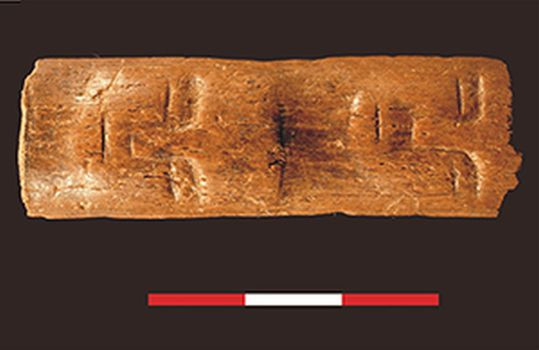Syria: Archaeologists Find 9,000-Year-Old Cow Bone 'Wand' Etched With Human Faces

A 9,000-year-old 'magic wand' with two human faces engraved onto it has been discovered in Syria by a group of archaeologists.
The wand, made of cow bone, was excavated from the Early Neolithic site of Tell Qarassa in Syria and is believed to be dated from the late ninth millennium BC.
The wand was found near a burial site where an earlier excavation also uncovered 30 headless skeletons.
The finding, published in the March issue of the journal Antiquity, helps to shed light on the rituals of people who lived in the Neolithic period, according to archaeologists.
"Earlier traditions of figurative art had avoided the detailed and naturalistic representation of the human face. Fundamental changes occurred during the Pre-Pottery Neolithic with the famous plastered skulls of Jericho and other sites," archaeologists noted, in their findings.
"Statues, masks and smaller carvings also appeared."
Experts believe the wand may have been used as part of an ancient burial ritual.
"This small bone object from a funerary layer can be related to monumental statuary of the same period in the southern Levant and south-east Anatolia that probably depicted powerful supernatural beings," the archaeologists said.
"It may also betoken a new way of perceiving human identity and of facing the inevitability of death.
"By representing the deceased in visual form, the living and the dead were brought closer together," they added.
Tell Qarassa is one of the few archaeological sites in the country that has not suffered damage during the Syrian civil war.
As a result of the civil war, there have been illicit archaeological excavations across the country, including the six World Heritage sites - the Ancient Villages of Northern Syria, Bosra, Crac des Chevaliers, Palmyra, Damascus and Aleppo.
© Copyright IBTimes 2025. All rights reserved.






















